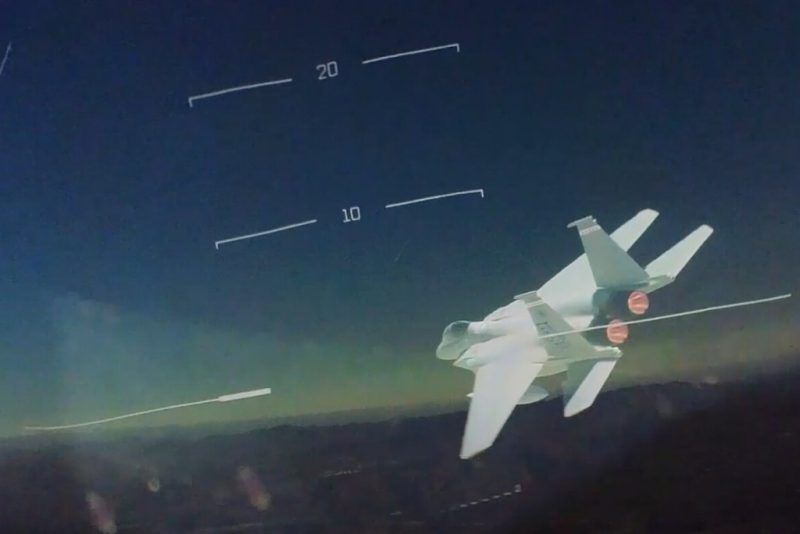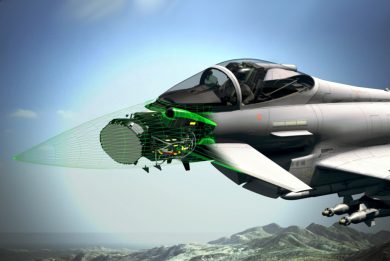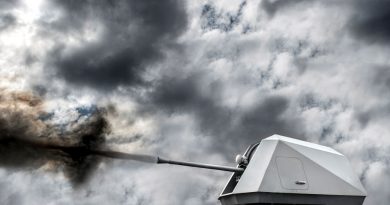Augmented Reality training for RAF pilots
At FIA2024, the Royal Air Force (RAF) has announced that it is set to use augmented reality (AR) to evaluate whether the revolutionary technology can be used to help increase the number of frontline fighter pilots
Group Captain Ryan Morris, RAF, Assistant Director Plans at the Directorate of Flying Training, told EDR On-Line that the UK MoD, in partnership with BAE Systems, will conduct an in-flight demonstration of the Advanced Tactical Augmented Reality Systems (ATARS) on a Hawk T.Mark 2 aircraft this year in October.
The MoD has signed the second part of contract with the US company Red 6 which is the creator of ATARS and Augmented Reality Command and Analytic Data Environment (ARCDADE). Red 6 systems are the first wide field-of-view, full colour demonstrably proven outdoor augmented reality solution that operates in dynamic outdoor environments. Together, they will bring virtual and constructive training assets into the real-world by allowing pilots and ground operators to see synthetic threats in real-time, outdoors, and critically, in high-speed environments.
ATARS enables pilots to identify, engage and defeat virtual adversaries programmed to act and react as a pilot would experience in hostile combat, and co-operate with synthetic support aircraft while airborne.
This means the pilot of a Hawk flying over the UK will see through their visor virtual aircraft another Hawk flying alongside, and then adversary fighter aircraft displaying hostile intent, over different terrains and weather, in virtual contested airspace.
Such synthetic training offers the opportunity to not only reduce the demand for live assets but drives fuel efficiencies and achieves more training per flying hour for the trainee.
The outcome from this demonstration will be 10 serials carried out by RAF test pilots which will assist the RAF in assessing and analysing the interoperability and capability of this new technology as it considers whether AR should form part of its future flight training strategy.
If adopted the technology could be spirally developed so training can be constantly updated to ensure pilots can maintain the battle-winning edge.
Head of the UKMFTS Delivery Team at Defence Equipment and Support (DE&S), Commodore Steve Jose said: “We are always looking for opportunities that innovative technologies potentially offer to improve our training delivery. Working collaboratively with industry we were able to deliver this at pace to allow the RAF to investigate this exciting technology to help inform future decisions around fighter pilot training.”
To date, BAE Systems and Red 6 have carried out 3D scanning and feasibility assessments on the Hawk T.Mk2 aircraft at RAF Valley, the home of No 4 Flying Training School, responsible for training the UK’s next generation of fighter pilots.
They have used this digital picture of the aircraft to understand how ATARS will be integrated into the aircraft, which equips pilots for life in frontline fast jets including Typhoon and F-35 Lightning. The development of this into a concept demonstration means that the technology can be tested while airborne to assess its future potential.
Group Captain Morris said that the RAF pilot training is suffering from the shortage of flying hours and instructors, and costs but augmented reality could increase the throughput by 50%. If adopted, the system could be integrated to all RAF fast-jet and training aircraft.
Red 6’s CEO, Daniel Robinson, a former RAF fast-jet pilot, said that to mimic reality one helmet could do everything with advanced head-tracking of the pilot, aircraft movement, and simulated images projected onto the visor with an 18,000 NITs of brightness. He said that the system has been flown more than 2,000 hours on TA-4 and T-38 aircraft and that Boeing had invested in demonstrations on the T-45 Goshawk and it could be ready for the RAF in 2026.
Photos by BAE Systems and D. Oliver





